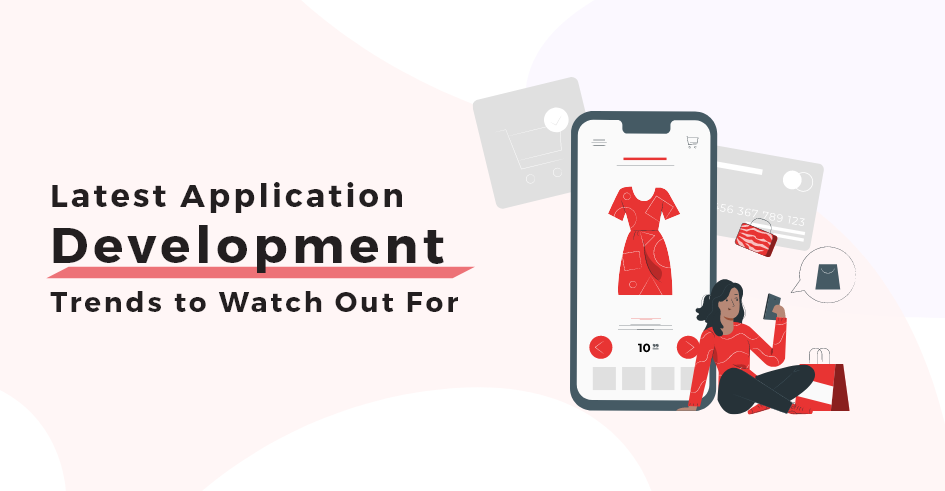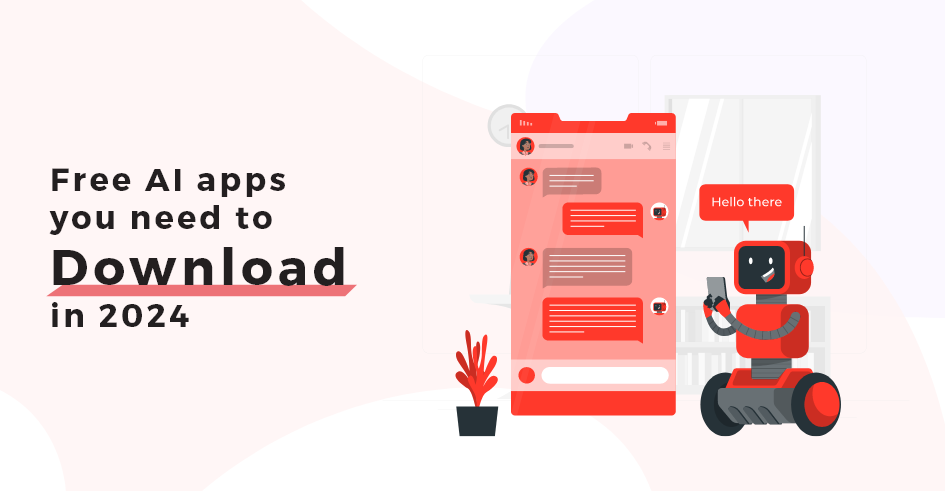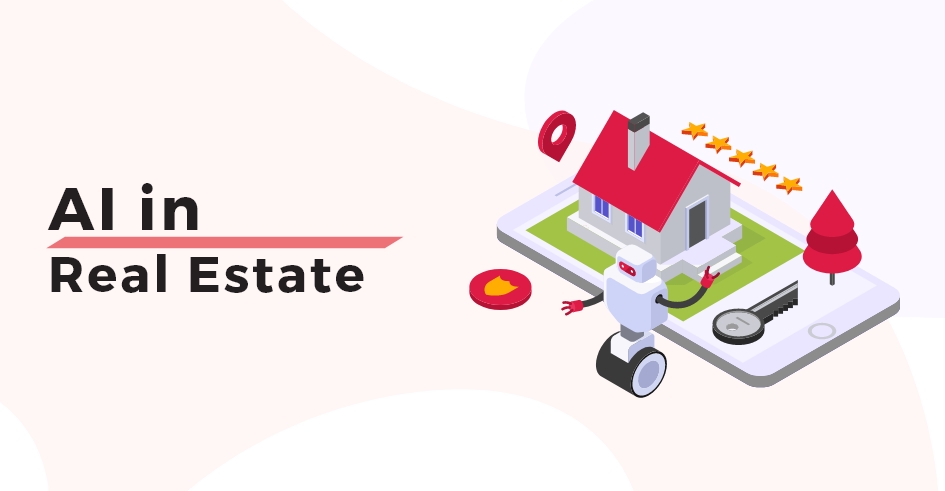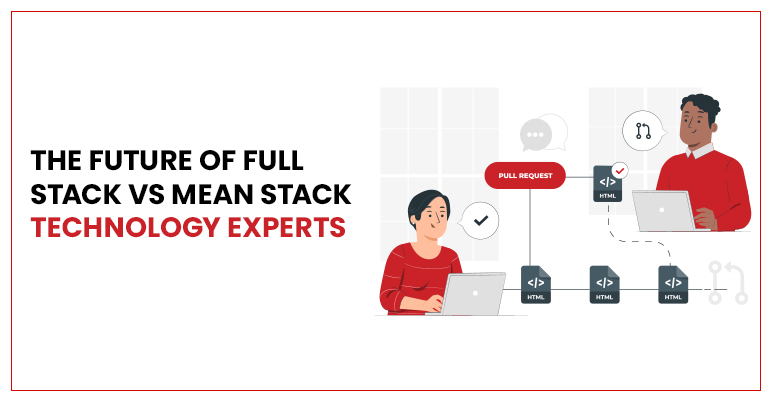Buckle up, app developers! The mobile app market is on a record-breaking spree, with a projected 258.2 billion downloads in 2024 alone. Given the widespread use of various applications, it can be difficult to discern which ones will truly make an impact. This blog delves into the top 10 application development trends that are expected to dominate in 2024. It explores the technical aspects and practical applications of these app development trends so you can stay up-to-date and create cutting-edge apps in 2024.
Get ready to discover trends that will not only elevate your app’s functionality but also redefine how users interact with mobile experiences in the coming year. So, grab your coding coffee because the future of mobile is about to unfold!
Top 10 application development trends
The top application development trends for 2024 are:
- Artificial Intelligence (AI) Integration
- Progressive Web Apps (PWAs)
- No-Code/Low-Code Platforms
- Prioritizing User Experience (UX) for Success
- Foldable Devices
- Camera-Centric Features with Augmented Reality (AR) and Virtual Reality (VR)
- Touchless UI
- Cloud-Based Mobile Apps
- The Rise of Premium Apps
- Audio-Based Social Media
1. Artificial Intelligence (AI) Integration
Artificial Intelligence (AI) Integration is one of the hottest application development trends in 2024. With significant advancements in recent years, AI is no longer a distant dream but a reality shaping the future of technology. In 2024, we expect to see AI seamlessly integrated into apps, creating a more intelligent and user-centric experience. By 2026, AI will power personalized adaptive user interfaces in 30% of new applications, up from less than 5% currently.
AI is adding to the application development trends by automating repetitive tasks, personalizing user experiences, and building smarter applications. For AI integration example, Netflix uses AI to personalize content recommendations for its users.
Technical Aspects
AI encompasses various techniques like machine learning (ML) and deep learning (DL). ML algorithms analyze vast amounts of data to identify patterns and make predictions. DL utilizes artificial neural networks to mimic human brain function, enabling complex tasks like image and speech recognition.
Industry Applications
- Retail: AI-powered product recommendations based on user behavior (think Amazon’s “Customers Who Bought This Item Also Bought” feature).
- Finance: Fraud detection and risk assessment using anomaly detection algorithms.
- Healthcare: AI-driven chatbots for symptom analysis and preliminary diagnosis.
Key strategies for developers
- Integrate AI libraries like TensorFlow or PyTorch to build ML models. TensorFlow (https://www.tensorflow.org/) and PyTorch (https://pytorch.org/) are two popular open-source libraries for machine learning. These libraries offer a wide range of tools and functionalities for building, training, and deploying machine learning models.
- Take advantage of cloud platforms like Google Cloud AI or Amazon SageMaker for pre-trained AI models and development tools. Cloud platforms like Google Cloud AI (https://cloud.google.com/products/ai) and Amazon SageMaker (https://aws.amazon.com/sagemaker/) offer a variety of pre-trained AI models that developers can Wield for various tasks like image recognition, natural language processing, and more. These platforms also provide development tools and infrastructure that can streamline the process of building and deploying AI-powered apps.
2. Progressive Web Apps (PWAs)
Progressive Web Apps (PWAs) offer the best of both worlds, combining the functionalities of native apps with the accessibility of web applications. PWAs work offline, send push notifications, and provide an app-like user experience without requiring installation from an app store. This translates to a wider reach and improved user experience compared to traditional web apps.
Pinterest successfully implemented a PWA strategy, resulting in a 40% increase in user engagement and a 60% rise in time spent on the platform. This demonstrates the power of PWAs in capturing and retaining users.
Technical Aspects
PWAs Capitalize on service workers, web push notifications, and app-shell architecture to deliver a native-like experience. They work offline, can be installed on the home screen, and offer fast loading times. If you are new to PWAs, you can check out this Beginner’s Guide to Progressive Web Apps.
Industry Applications
- Media & Entertainment: Offline access to downloaded music or movies on streaming platforms like Spotify.
- Travel & Hospitality: Book hotels and manage itineraries offline with booking apps like Booking.com.
- Social Media: Accessing social media feeds and sending messages without an internet connection (limited functionality).
Key strategies for developers
- Use frameworks like React or Vue.js to build PWAs with a single codebase for web and mobile. These popular JavaScript frameworks are well-suited for building PWAs as they offer features like component-based architecture and virtual DOM, which streamline development and ensure a consistent user experience across platforms. You can learn more about React at https://legacy.reactjs.org/ and Vue.js at https://vuejs.org/.
- Implement service workers to enable offline functionality and push notifications. Service workers are essential for PWAs as they act as intermediaries between the app and the network. They allow features like offline functionality by caching content and background updates for later use. Additionally, service workers allow developers to send push notifications to users even when the app is not actively running. You can find a detailed explanation of service workers in the MDN Web Docs (Mozilla Developer Network) at https://developer.mozilla.org/en-US/docs/Web/API/Service_Worker_API.
- Optimize for fast loading times with code splitting and image compression techniques. Fast loading times are crucial for a positive user experience, especially for PWAs that aim to provide a native-like experience. Techniques like code splitting, where the application code is divided into smaller chunks loaded on demand, and image compression, which reduces file sizes without sacrificing quality, can significantly improve loading times. You can explore resources like https://legacy.reactjs.org/docs/code-splitting.html on the React website and https://developers.google.com/speed/docs/insights/OptimizeImages from Google Developers to learn more about these optimization techniques.
3. No-Code/Low-Code Platforms
The no-code/low-code development movement is empowering businesses to create apps without needing extensive coding expertise. This is one of the application development trends that is highly sought after. These platforms provide drag-and-drop interfaces and pre-built components, making app development accessible to a wider range of individuals and businesses.
Using the best low-code platforms, the NCLC code market is anticipated to reach a staggering $4.7 billion by 2026. This growth signifies the increasing demand for these platforms as businesses seek to build apps quickly and cost-effectively.
Technical Aspects
These platforms provide drag-and-drop interfaces and pre-built components, allowing users with minimal coding experience to build basic apps. Some platforms offer scripting options for customization. Flutterflow Web App Development is a prime example of a low-code platform that falls into the popular application development trends.
Industry Applications
- Education: Creating interactive learning modules for students and parents.
- Small Business: Building internal tools for customer management or inventory tracking.
- Non-profits: Developing fundraising or volunteer management applications.
Key strategies for developers
4. Prioritizing User Experience (UX) for Success
In a market saturated with apps, user experience (UX) is the ultimate differentiator. Users expect apps to be intuitive, easy to navigate, and visually appealing. Focusing on UX involves:
- Understanding user needs: Conducting user research to identify pain points and design features that address them effectively.
- Streamlined navigation: Creating a clear and consistent navigation structure that allows users to find what they need effortlessly.
- Engaging UI: Designing an aesthetically pleasing and user-friendly interface that enhances the overall app experience.
Technical Aspects
UX design involves a user-centered approach, focusing on usability, information architecture, and interaction design. This includes A/B testing different layouts and functionalities to optimize user experience.
Industry Applications
- E-commerce: Streamlined checkout processes and intuitive product search functions for a smooth shopping experience.
- Fintech: User-friendly interfaces for managing finances and clear information about fees and investment options.
- Gaming: Engaging gameplay mechanics, intuitive controls, and clear tutorials for a satisfying player experience.
Key strategies for developers
- Conduct user research to understand user needs, pain points, and expectations.
- Develop user personas to define target audiences and tailor the UX accordingly.
- Utilize user testing and analytics tools to gather data and iterate on the UX design.
5. Adapting to the Rise of Foldable Devices
Foldable devices are swiftly gaining traction in the mobile landscape. These innovative devices present unique challenges and opportunities for app developers. Designing apps that seamlessly adapt to different screen sizes and functionalities when the device is folded or unfolded is crucial.
The global foldable phone market is expected to reach a value of USD 131.91 Billion by 2033. This growth necessitates app developers to embrace foldable device compatibility to cater to this burgeoning market segment.
Technical Aspects
Foldable devices require apps to adapt their layout and functionality based on the screen size and orientation (folded or unfolded). Responsive design principles are crucial for creating seamless user experiences.
Industry Applications
- Productivity & Entertainment: Apps like document editors or video streaming services can adjust their interfaces to provide a larger viewing experience on the unfolded screen.
- Gaming: Games can utilize the unfolded screen for enhanced visuals and incorporate intuitive touch controls on both halves of the device when folded.
- E-commerce: Product browsing and detailed product information can be optimized for both single-hand use and a larger unfolded view for detailed comparisons.
Key strategies for developers
6. Camera-Centric Features with Augmented Reality (AR) and Virtual Reality (VR)
The power of smartphone cameras is being wielded to create immersive experiences within apps. Augmented Reality (AR) overlays digital elements onto the real world, while Virtual Reality (VR) transports users to completely simulated environments.
Technical Aspects
- AR: Overlays digital elements onto the real world captured through the smartphone camera. This requires computer vision techniques for object recognition and spatial mapping.
- VR: A VR headset creates a completely immersive environment. VR development involves 3D graphics rendering and head tracking technology.
Industry Applications
- Retail: AR furniture placement apps like IKEA Place allow users to visualize furniture in their homes virtually before purchase.
- Education: AR science apps can display interactive 3D models of objects or historical landmarks for a richer learning experience.
- Travel & Tourism: VR apps can offer virtual tours of destinations, allowing users to explore locations remotely.
Key strategies for developers
- Integrate AR/VR development kits (SDKs) like ARCore or ARKit from Google and Apple, respectively.
- For VR development, utilize 3D modeling tools and game engines like Unity or Unreal Engine. Unity (https://unity.com/) and Unreal Engine (https://www.unrealengine.com/) both have extensive documentation and tutorials to help you get started.
- Ensure smooth performance and low latency for a high-quality AR/VR experience. Optimize your code for performance and Utilize efficient rendering techniques to achieve this.
- Augmented Reality App Development (https://www.technbrains.com/augmented-reality-app-development) – This blog post explores the key considerations for building AR applications, including choosing the right development tools and designing engaging AR experiences.
7. Touchless UI: A Shift Towards Voice Commands and Eye Tracking
Touchless user interfaces (UI) are emerging as one of the prominent application development trends, driven by advancements in voice recognition and eye-tracking technologies. This allows users to interact with apps using voice commands and eye movements, offering a more convenient and hands-free experience.
The global voice and speech recognition market is projected to reach $26.8 billion by 2025. This growth highlights the increasing demand for voice-enabled interactions, prompting developers to integrate touchless UI elements within their apps.
Technical Aspects
- Voice control: This feature utilizes natural language processing (NLP) to understand spoken commands and convert them into actions within the app.
- Eye tracking: Tracks eye movements using specialized sensors to control app functions and navigate interfaces.
Industry Applications
- Healthcare: Voice-controlled interfaces for hands-free operation in sterile environments, ideal for medical professionals.
- Automotive: Eye tracking can detect driver fatigue or distraction, prompting safety warnings.
- Smart Homes: Voice assistants like Google Assistant or Amazon Alexa allow users to control smart home devices hands-free.
Key strategies for developers
- Platforms like Google Cloud Speech-to-Text and Amazon Transcribe offer robust voice recognition APIs that developers can integrate into their apps. These APIs convert spoken language into text, enabling users to control app functions and navigate interfaces through voice commands.
- Explore eye-tracking SDKs like Tobii for implementing eye-controlled functionalities.
- Design clear and concise voice prompts and on-screen instructions for intuitive interaction with the touchless UI. These help users interact with touchless interfaces.
8. Cloud-Based Mobile Apps for Scalability and Accessibility
Cloud-based mobile apps store data and functionality on remote servers rather than on individual devices. This offers several advantages for developers and users:
- Scalability: Cloud-based apps can easily be scaled up or down to meet user demands without requiring updates on individual devices.
- Accessibility: Users can access their data and applications from any device with an internet connection, promoting flexibility and convenience.
- Reduced development costs: Cloud storage eliminates the need for expensive on-device storage solutions, potentially reducing development costs.
A study by RightScale indicates that 82% of enterprises are leveraging cloud technologies for their mobile app development. These application development trends signify the growing adoption of cloud infrastructure for mobile app development due to its numerous benefits.
Technical Aspects
- Cloud-based apps store data and functionality on remote servers rather than on individual devices. This requires APIs (learn more about API Development) for communication between the app and the cloud servers.
- Backend-as-a-Service (BaaS) platforms like Firebase or AWS Amplify provide pre-built functionalities for user authentication, data storage, and cloud functions.
Industry Applications
- Social Media: Cloud storage allows for efficient handling of large user data and media uploads, like photos and videos.
- On-demand Services: Cloud infrastructure can seamlessly scale to accommodate fluctuating user demand for services like ride-hailing or food delivery.
- Collaboration Tools: Real-time document editing and collaboration features are facilitated by cloud-based storage and synchronization.
Key strategies for developers
- Utilize BaaS platforms to streamline backend development and reduce infrastructure costs.
- Implement robust security measures for data encryption and access control on cloud servers. Consider the importance of security in custom software development and industry best practices and consult security experts for a comprehensive approach.
- Design the app to function even with limited internet connectivity, ensuring a smooth user experience. Ensure data synchronization occurs seamlessly when a connection is re-established.
9. The Rise of Premium Apps: Users Willing to Pay for Quality
The era of free-to-play apps with intrusive advertising might be nearing its end. Users are increasingly willing to pay for high-quality applications that offer ad-free experiences, premium features, and ongoing content updates. Subscription models and in-app purchases are becoming more popular ways to monetize apps.
Global consumer spending on mobile apps is predicted to reach $171 billion by 2024, according to Sensor Tower Store Intelligence data. This spending shift highlights the growing market for premium apps that deliver exceptional value to users.
Technical Aspects
- Subscription models offer developers recurring revenue streams. In-app purchases allow users to unlock premium features or additional content within the app.
- Secure payment gateways like Apple Pay or Google Pay ensure a seamless and trustworthy payment experience.
Industry Applications
- Gaming: Freemium models with optional in-app purchases for additional levels, characters, or cosmetic items.
- Productivity & Entertainment: Premium subscriptions for ad-free experiences or access to exclusive content like music tracks or high-quality video streaming.
- Fitness & Health: Subscription-based workout programs or personalized coaching features within fitness apps.
Key strategies for developers
- Offer a clear value proposition and demonstrate the benefits of premium features compared to the free version.
- Provide free trials or introductory offers to entice users to subscribe or purchase in-app content.
- Continuously update the app with new features and content to justify the premium price tag.
10. Audio-Based Social Media: A New Wave of Engagement
Platforms like Clubhouse have popularized audio-based social media experiences. These apps allow users to participate in live audio conversations, discussions, and interviews, fostering a more intimate and engaging form of social interaction.
Technical Aspects
- Real-time audio streaming protocols like WebRTC enable live audio conversations within the app.
- Features like spatial audio or noise cancellation enhance the audio quality and create a more immersive experience.
Industry Applications
- Social Networking: Live audio discussions and interviews offer a more intimate and interactive way to connect with friends or follow influencers.
- Education & Learning: Audio-based courses or live lectures provide increased accessibility for learners on the go.
- Entertainment: Interactive audio storytelling experiences or live audio performances can foster a unique form of engagement.
Key strategies for developers
Here are some key strategies for developers building audio-based social media apps in 2024:
- Core Audio Functionality: Integrate real-time audio streaming libraries or SDKs like Agora Real-time Communication SDK (https://www.agora.io/en/developer-resources/) or Twilio Programmable Voice (https://www.twilio.com/docs/voice). These tools provide the foundation for building robust audio chat features within your app.
- Enhanced Audio Quality: Focus on delivering clear audio experiences for users. Consider features like noise cancellation, which can be achieved using libraries like Krisp.ai (https://krisp.ai/) or Dolby Voice (https://www.dolby.com/). High-quality audio is crucial for fostering engaging conversations and a positive user experience.
- Safe and Respectful Environment: Implement moderation tools and guidelines to maintain a safe and respectful environment within your audio-based social platform. Explore solutions like Y Combinator’s moderation toolkit Orb (https://techcrunch.com/2023/03/29/orb-which-helps-b2b-companies-price-their-products-raises-19-1m/) or Google’s AI-powered moderation tools for content safety (https://cloud.google.com/dialogflow).
Wrapping it up
As the world of mobile technology continues to advance at a rapid pace, the landscape of application development is constantly evolving alongside it. To stay ahead of the curve, developers must remain informed about the latest trends and innovations shaping the future of mobile experiences. By keeping their finger on the pulse of emerging trends, developers can create apps that are both innovative and user-centric, standing out in a highly competitive marketplace. From harnessing the power of artificial intelligence to personalize user experiences to embracing foldable devices and exploring touchless user interfaces, developers who stay up-to-date with these cutting-edge developments are better positioned to build successful apps that users love to use.
Stay Ahead of the Curve: How TechnBrains Can Supercharge Your Mobile App with Cutting-Edge Trends
TechnBrains, a leading mobile app development company, understands your need to stand out from the crowd. We go beyond simply building apps – we empower businesses to harness the power of emerging trends to create groundbreaking user experiences.
Here’s how TechnBrains can elevate your mobile app and keep you ahead of the competition:
- Trend Expertise: Our team of 50+ mobile app development experts is well-versed in the latest trends, such as AI integration, AR/VR experiences, and touchless UIs. We’ll translate these trends into practical solutions that enhance your app’s functionality and user engagement.
- Proven Track Record: We’ve conceptualized, designed, and developed solutions for industry giants, and you can become one of them. This experience allows us to anticipate industry-specific needs and tailor your app for success.
- Startup Success Stories: TechnBrains has played a crucial role in the digital product development of various startups. We understand the unique challenges faced by startups and can guide you strategically to ensure your app makes a splash.
TechnBrains doesn’t just build apps; we build game-changers.
Here are some specific examples of how we can Bank on trends to elevate your app:
- AI-powered personalization: Imagine an app that anticipates user needs and delivers a tailored experience. We can integrate AI to make this a reality, boosting user satisfaction.
- Immersive AR/VR experiences: Revolutionize user engagement with AR/VR features. Let users virtually try on clothes or visualize furniture in their homes, leading to more informed purchase decisions.
- Seamless voice control: Make your app accessible and hands-free with voice command integration. This caters to users on the go and enhances accessibility.
Contact TechnBrains today to schedule a consultation with our experts. We’ll help you navigate the ever-evolving mobile landscape and create an app that incorporates some of these application development trends to help you standout!





